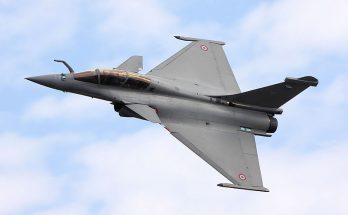A snapshot of recent news from sources around the world on the ongoing Russia-Ukraine war.

Political Developments
The United States has announced it will no longer mediate peace talks between Ukraine and Russia after President Putin rejected a ceasefire, shifting responsibility for negotiations directly to Kyiv and Moscow. In an interview with Fox News, U.S. Vice President JD Vance said he believes the war in Ukraine is “not going to end any time soon.”
This move follows the completion of a favorable minerals deal with Ukraine, announced on Wednesday. The deal — originally floated by President Volodymyr Zelensky to candidate Donald Trump during last year’s U.S. presidential campaign — follows months of tense negotiations between the two sides, which included a tense stand-off in the Oval Office in February.
Kyiv and Washington will move forward with the creation of a joint investment vehicle to channel funds into the development of Ukraine’s natural resources, including oil and gas. No security guarantees were included, but the document bluntly referred to the conflict as “Russia’s full-scale invasion” and officials have added that “no state or person who financed or supplied the Russian war machine will be allowed to benefit from the reconstruction of Ukraine.”
With the mineral deal moving forward, the Trump administration has also appeared to re-open the subject the military support for Ukraine. The White House cut military aid in March, but this week informed the Congress of its approval for a new $50 million direct commercial sale to the Ukrainian military. Press reporting in recent weeks has suggested Kyiv has requested to buy billions of dollars’ worth of military equipment, especially air-defense systems and interceptors that its industry can’t produce.
President Donald Trump is pressuring Ukraine to cede territory, including Crimea, to Russia to end the war, warning he may withdraw U.S. support if a deal proves too difficult. This stance has alarmed European allies, who see the conflict as critical to continental security and are now seeking ways to bolster Ukraine militarily, even without U.S. backing.
Meanwhile, the Congress appears to be making its own moves on the war, with Senator Lindsey Graham (R-SC) stating this week that 72 Senators support a measure that would impose “bone crushing” sanctions on the Russian economy — through the imposition of extraordinary tariffs on countries importing Russian oil and gas. The bill would stack a new set of tariffs up to 500 percent on countries that import Russian energy, Graham said.
Press investigations this week highlighted the poor conditions facing captive Ukrainian soldiers at the Taganrog detention center, where POWs are reportedly subjected to extreme physical torture. The prison also held Ukrainian journalist Viktoriia Roshchyna, who went missing in 2023 while reporting on the conflict and was later confirmed as captured by Russia. Her body was turned over to Ukraine earlier this year with signs of severe torture, media investigations revealed this week.
Military Assistance to Ukraine
Washington has sent mixed signals on the subject of military aid to Ukraine. The Trump administration has not approved any aid packages to Ukraine since taking office, and cut aid altogether in March. The White House has now reportedly approved a new $50 million arms sale to Ukraine, and Secretary of State Marco Rubio this week called on Europe to do more to aid Ukraine. Intriguingly, some F-16 airframes appear to have recently been drawn from a boneyard in Arizona for supply to Ukraine, likely for use as spare parts to support the European-supplied F-16 fleet.
But Australian media reported this week that a planned transfer of decommissioned M1A1 Abrams main battle tanks has stalled over U.S. resistance to the delivery. The Biden administration delivered 31 M1A1s to Ukraine, and Australia has pledged to send 49, but the Trump administration has thus far refused to approve the hand-over.
Ukrainian partners continue to supply drones from abroad. Norway’s Griff Aviation will donate its GRIFF 60 cargo drone, used for transporting military supplies, the company said on Sunday.
While foreign-supplied drones continue to arrive, the Ukrainian government has announced that the majority of drones its armed forces operate come from domestic sources. Kyiv gave a figure of more than 95 percent of the drones in use are produced in-country. To support this burgeoning industry, the European Union this week announced that it will provide funds through the European Defence Fund for projects involving Ukrainian drone companies.
Ukraine continues to pressure Germany to allow delivery of TAURUS missile. Chancellor Olaf Scholz opposed providing TAURUS to Ukraine, worried it could escalate the conflict. But Germany will soon have a new chancellor, Friedrich Merz, who might be willing to provide the missile to Ukraine.
Some of Ukraine’s European partners have toyed with the idea of deploying a peacekeeping force to help stabilize the situation in conjunction with a peace agreement. However, as those talks have focused on the logistics of a Ukraine mission, European governments are struggling to come up with a plan to deploy even 25,000 troops, which itself is already a much smaller target than has been recommended.
Battlefield Updates
Pyongyang confirmed this week that it has deployed troops to Ukraine in support of Russia’s war, formally acknowledging the participation of its forces after months of reports that North Korean troops had been spotted on the battlefield. Alongside the personnel, North Korea continues to send ballistic missiles and ammunition, as well as howitzers and multiple rocket launchers, to support Russian operations. Moscow, for its part, has reportedly aided North Korea in the development of a new class of warship.
North Korea has suffered as many as 4,700 casualties since entering the conflict, according to estimates from South Korea, including 600 troops killed in action. Some soldiers have been captured by Ukrainian forces, as well. Putin has praised North Korea’s actions in Ukraine, and said Moscow would never forget Pyongyang’s contributions to the war effort.
Russian originally claimed to have fully recaptured its territory in Kursk, but Putin later acknowledged that some Ukrainian soldiers remain in the region. Putin claimed the soldiers are in hiding waiting to be rescued. Meanwhile, Zelensky framed the situation as Ukrainian soldiers actively defending designated areas of Kursk.
Russian forces have conducted another attack on Ukraine. This operation involved more than 200 missiles and drones and took place during the night of April 24-25. The Russian strike targeted Ukrainian defense plants located in Kyiv.
Ukrainian air defense forces used the NASAMS (National Advanced Surface-to-Air Missile System) to intercept a Russian missile attack. The target of this attack was not mentioned. Kyiv claims these air defense systems downed 11 Russian cruise missiles in less than two minutes. A video was published on April 27.
President Volodymyr Zelensky warned this week that Russia is “preparing something” in neighboring Belarus, pointing to upcoming military exercises between Russia and its CSTO ally as a ruse for offensive operations. Minsk has largely avoided participation in the conflict, but Russian troops used Belarusian territory as a springboard for operations into Ukraine at the start of the war in 2022.
The Moscow Times reported this week that Russia’s Rosgvardia ordered RUB820 million of anti-drone electronic warfare systems from China in 2023 that turned out to be duds when put into combat conditions against incoming Ukrainian drones.
For 50 years, Forecast International intelligence reports have been the aerospace and defense industry standard for accurate research, analysis, and projections. Our experienced analysts compile, evaluate, and present accurate data for decision makers. FI's market research reports offer concise analysis of individual programs and identify market opportunities. Each report includes a program overview, detailed statistics, recent developments and a competitive analysis, culminating in production forecasts spanning 10 or 15 years. Let our market intelligence reports be a key part of reducing uncertainties and mastering your specific market and its growth potential. Find out more at www.forecastinternational.com



